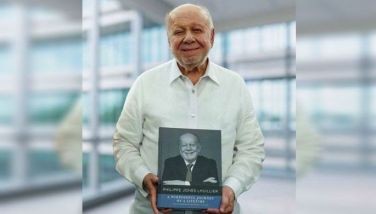PSE EASy oversubscription & refunds

Merkado Barkada (MB): Based on my inbox, many investors are concerned and confused about what happens if an IPO is oversubscribed. If an investor is allocated less than the full subscription amount requested [as like what happened to many with the ALLDY IPO], how is this refund handled? If the investor paid for the allocation through their broker account (like COL), is the refund returned to their broker account? How long does this refund take to process?
Ramon S. Monzon, PSE CEO (RSM): One of the documents released when there is an IPO is the Implementing Guidelines (IG) for LSIs. As you may know, this document spells out everything retail investors need to know about the LSI tranche – how many shares are offered, start and end date of the offer period, subscription, acceptable modes of payment, deadline for payment and so on. Among the provisions in the IG is the refund mechanism to be adopted by the Receiving Agent (RA) in case an LSI is only partially allocated shares or the LSI’s subscription is rejected. Normally, the refund is done via cheque payment directly to the investor which may be collected from the RA’s office.
I think the refund provision has been taken lightly in the past as no IPO has had an oversubscription and if there are rejected subscriptions, the company’s RA can easily liaise with LSIs since there are only a handful of them that they need to correspond with.
The ALLDY IPO highlighted the need for retail investors to be aware of LSI IGs and in turn, for RAs to explore options for refund in case they need to refund hundreds, even thousands of LSIs. And as you may know, ALLDY’s RA revised its refund guidelines and implemented a Direct-to-Broker option for clients of 32 TPs, wherein the refund amount was credited to the investors’ stock brokerage account. While not all TPs were able to participate, this was still an improvement in terms of making the refund process easier, more convenient and safer to LSIs.
MB: Are COL and FMSec the only brokers that facilitate direct PSE EASy subscription payments? When will investors be able to make PSE EASy subscription payments through the other brokers in this fashion?
RSM: There are some brokers that extend the service of remitting the payment or facilitating the settlement for their clients’ subscribed shares by coordinating with the receiving agent and submitting the payment in batches. While this is not required by the Exchange, we welcome these initiatives by some brokers and we hope that others extend the same service for their clients. One of the features we hope to introduce in PSE EASy is the payment facility so subscription fees can also be settled within the platform. We hope to make EASy a one-stop shop for IPO subscriptions.
MB: How does the PSE EASy system allocate shares in an oversubscription situation? Does the process used to determine allocations in an oversubscription situation change from issuance to issuance, and if so, how?
RSM: When the LSI tranche becomes oversubscribed, the applicant company must distribute the offer shares to as many shareholders as possible. This is accomplished using the “waterfall” approach to share allocation, which starts by satisfying the smallest subscription and distributing the same number of shares across all subscribers. For remaining orders with the same volume, the system will then check the timestamp upon which the subscription was made and will prioritize the order that came in first (i.e. “First-in, First-out”). The process continues until all the shares are taken up. This allocation methodology ensures that most, if not all, subscribers get to participate in an offering. Investors who applied and paid for a higher number of offer shares may not get fully allocated and will become eligible for refund.
MB: Investors have noticed that a few recent issuances have had higher-than-normal maximum subscription levels (ALLDY, SGP). How does PSE EASy determine the maximum allowable subscription for each issuance?
RSM: The Exchange is guided by PSE Memorandum CN-No. 2018-0045 which states that the Exchange may set another maximum subscription amount, subject to the approval of the SEC, on a case-to-case basis for offer sizes beyond P5 billion to help facilitate greater participation and subscription to the LSI allocation. Further to said PSE Memorandum, the applicant company may apply for, or the Exchange may, at its discretion, increase the maximum subscription amount if the offer size exceeds P5 billion.
MB: What happens if an LSI doesn't submit payment for their subscription in time? What happens if the LSI only submits partial payment? Is the LSI allocated to the limit of the payment, or is the entire subscription rejected?
RSM: Investors must settle their application to purchase offer shares in full within the prescribed deadline pursuant to the LSI IG of a particular offering. Only those applications that are settled in full will receive share allocation. If payment made by the investor is less than the subscribed amount, his application shall be rejected and the payment shall be refunded.
MB: Is there a way for LSIs to know how oversubscribed an issuance is at the moment they place their orders?
RSM: An offering’s take up can only be determined at the end of the offer period, after the deal team has reviewed all the applications and after all the payments received are reconciled from the payment channels and posted in PSE EASy.
MB: Are there plans to provide LSIs with the same information about the LSI order book that brokers have access to through the PSE EASy system?
RSM: Investors only have access to their respective subscriptions and can only see their own application to purchase offer shares. Investors should invest in an offering based on the information provided in the offering prospectus and not based on the subscription of other investors.
MB BOTTOM-LINE
A big special thank-you to Ramon Monzon for taking the time to answer my email questions.
Undoubtedly, the PSE EASy program was (and is) a massive step in the right direction toward a more inclusive market, and Mr. Monzon deserves credit for pushing the PSE to implement the program when it did.
That said, as with any journey worth taking, the destination isn’t reached after just the first step, and here with the PSE EASy program there are several more steps that can be taken to both improve the investor experience of using the program and to improve the bite and effectiveness of the program itself.
I want to acknowledge the interesting positives first, then I’ll address some points that could help improve the effectiveness of the PSE EASy program for LSIs:
1. Interesting positives:
- PSE EASy centralized payments: I’m excited for the prospect of LSIs being able to pay for shares through the PSE EASy platform itself, instead of making payments through a physical bank or through (some) brokers. Conceivably, the ability to accept payments through the platform might make it possible for any refunds to be returned directly to the consumer as well. That kind of system would help eliminate a lot of the refund risk that we see in the system right now.
- Prioritization of small orders: It’s important to recognize right from the start that in a situation where demand exceeds supply, there is not going to be a share distribution solution that will please everyone. That’s why I like that the PSE has seemingly prioritized the smallest orders using the waterfall method. A simplified example of how that would work is this: assume there are 1,000 IPO shares available for distribution, and 100 investors have submitted subscription requests ranging from 5 shares all the way up to the full 1,000 shares. What the waterfall method does is satisfy the smallest order first (5 shares), and then give that same amount of shares to each of the other 99 investors (regardless of how many shares they asked for). After this first round of the waterfall, 500 of the 1,000 shares have been distributed (5 shares x 100 investors). If the next lowest order is 7 shares, the difference (7-5) is satisfied, and then also distributed to the other 99 investors. After the second round of the waterfall, 698 of the 1,000 shares have been distributed. This continues until all 1,000 shares are distributed. You can see how everyone gets something, and that the smallest orders are prioritized. This definitely helps level the access playing field for smaller investors.
2. Development points:
- De-risk retail refunds: The PSE’s response to the uncertainty of the ALLDY refund situation was essentially “buyer beware”; the retail investor must read the Implementing Guidelines for each of the IPOs to determine for themselves if the risk of the particular refund policies of the Receiving Agent are worth the potential rewards of the IPO. Considering that there are dozens of Receiving Agents, and no set policy in terms of how to handle refunds to act as a best practice, it feels as though the PSE is missing an opportunity to greatly reduce the uncertainty that retail investors face through this process. Implementing a one-stop payment facility through PSE EASy might be one way to address this issue, or the PSE could dictate a set of refund standards that make it as easy for LSIs to receive IPO refunds as the system makes it for RAs to receive the original IPO payments.
- Reduce the retail “info gap”: The TPs (brokers) are responsible for buying up their “master” allocations, which each broker is free to use as it sees fit; it can keep the shares for its own purposes, or it can sell them to clients. It can sell all of the shares to one particular client in a huge chunk or distribute them using any method that it likes. Conveniently, the PSE EASy program provides brokers with a huge advantage that they can use to help make that critical investing decision: the ability to monitor the retail take-up of an upcoming IPO through a real-time dashboard of the PSE EASy system. Brokers get to see up-to-the-minute stats on the number of buyers and the size of the orders and can use this information to make informed investing decisions. Presumably, brokers can also pass this information on to their wealthy and favored clients. This is information that is not made available to the local small investor, who must make their purchase completely in the dark about whether the IPO in question is in demand. Not for a lack of this information, since the PSE tracks and provides this information to brokers for free as part of the system, but as a choice to provide the information advantage to the brokers, and as an extension, their top clients. This information asymmetry is not necessary and given the “buyer beware” approach to refunds, it seems strange for the PSE to restrict access to information that could help an investor manage their potential refund risk.
My overall takeaway from this quick back-and-forth with Mr. Monzon is that the retail experience of the PSE EASy program may improve, but the roadmap for how it will improve doesn’t seem like it will be constructed in collaboration with retail and that the timeline for when these improvements will arrive is still very uncertain.
Retail investors are almost certain to be exposed to many of the refund risks that were highlighted by the ALLDY IPO before clear and reliable change can help, such as a centralized payment processing facility or a PSE-dictated best practice of direct-to-broker refunds for all LSIs.
Merkado Barkada readers will know that I’m a huge champion of the PSE EASy program (I’ve written several “How To” posts to help investors register for the program and use its interface to invest in IPOs), so I hope that these points will be received in the same spirit in which they were given: that of constructive collaboration.
The retail segment of the investing public is here to stay, and will only grow as the middle class grows, as GDP rises, and as various reforms (such as the PSE EASy program) prioritize financial inclusion and participation of the “unbanked” and the “under-banked”.
If my overflowing inbox is any indication, these new retail investors are deadly serious, eager, and interested to get more deeply involved. That so many retail investors wanted to participate in an IPO that it broke the system is not a problem, but a clear opportunity for the PSE to grow its reach and relevance.
--

Merkado Barkada's opinions are provided for informational purposes only, and should not be considered a recommendation to buy or sell any particular stock. These daily articles are not updated with new information, so each investor must do his or her own due diligence before trading, as the facts and figures in each particular article may have changed.
- Latest


























